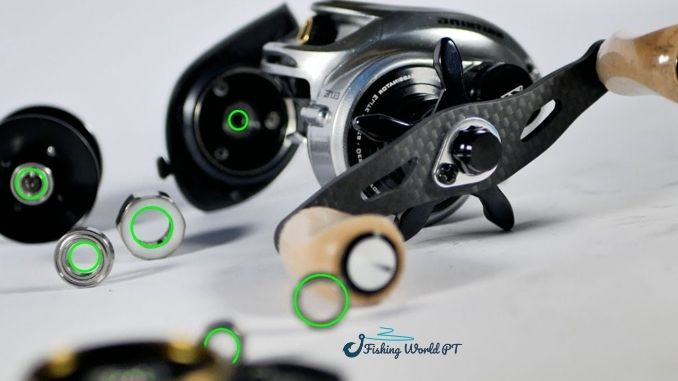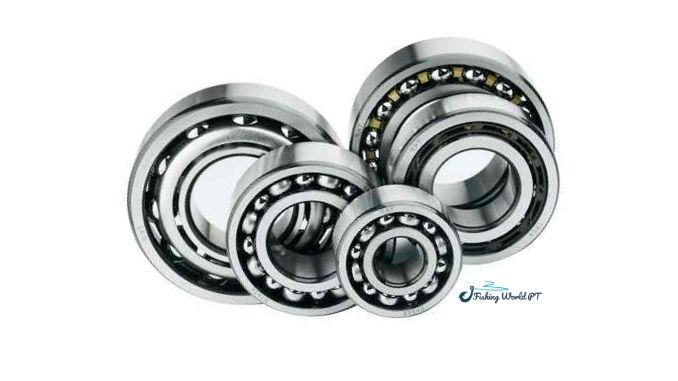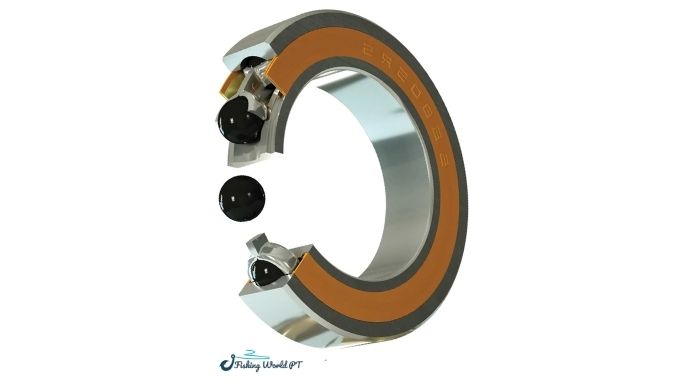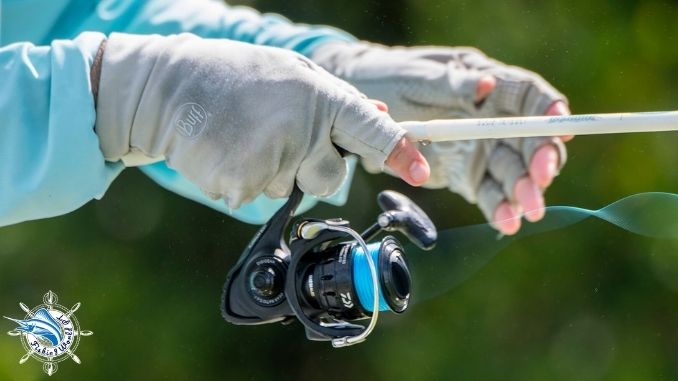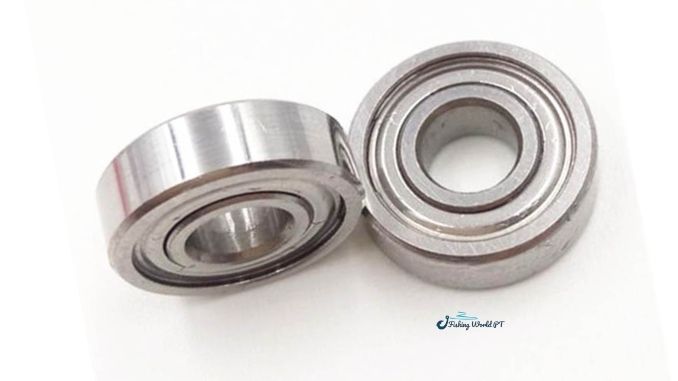There’s just too much information for you to know about your fishing kit. If you are a beginner, you may be overwhelmed with it. But those are the things that force you to learn to bring exciting experiences instead of complex challenges, uncomfortable feelings.
There are always questions to ask when learning about your setup, including fishing reels. It is an essential factor in deciding whether you have made your trip fruitful or not.
There are quite a few factors that come together to help the fishing reel work smoothly and accurately. Ball bearing is one of them. This is a factor you need to consider carefully before buying a fishing reel.
How many ball bearings should a fishing reel have? Four or five good-quality ball bearings are the minimum. You will find this in the best quality fishing reels on the market today. Quality and materials are also things you need to pay attention to, not just quantity.
Next, I will outline what you need to know about ball bearings and go into detail explaining it so you can have a better view and help you improve your performance trip.
What are ball bearings, and how do they work?
The first and most essential thing you need to know before diving into other things is “what is it”.
It is one or several spherical bearings, visualized as balls. Ball bearing is present on most equipment as long as it is movable. Although they can be located in different devices, they all have the same purpose of reducing friction and increasing the speed of the reel.
It is in the middle of a fixed axis in the center, surrounded by a moving wheel. The balls are located between the solid inner and outer parts, which helps the outside move circularly, but the inside remains stationary.
Both the handle and the spool are equipped with ball bearings for optimum movement. If you’ve worked with a good quality reel, you’ve probably felt the smoothness that good quality ball bearings provide.
Do you see any benefit in that smooth, quick movement? That’s right, the less friction, the easier the movement, which significantly increases the casting distance. The same is true for the retrieve. You won’t need to put too much effort to spin it; it’s much easier when the amount of friction is significantly reduced.
When purchasing reels, some reels will have a bearing description of 4+1, 5+1. Don’t get too confused about it; the first number is the number of ball bearings in the shaft, the rear number is for the rolling bearing.
In short, easy, efficient movement, as little friction as possible and increased speed are what ball bearings offer.
Is more ball bearing the better for the reel?
You will always hear the phrase “the more the better” from some website on the net or some other anglers. I don’t deny it if those bearings are of equal quality. A reel with ten poor-quality bearings will not be as good as a reel with five good-quality bearings. Like I said, quantity is not everything. The best number for the reels is four.
As for the baitcasters, they don’t have a fixed spool like the reel, so to increase the distance and accuracy of casting, the only thing you need to do is increase its smoothness. So five good-quality ball bearings would be the correct number here. However, if you are aiming for low-profile baitcasters, you can use four ball bearings.
Although the better quality ball bearing, the higher its price, it is well worth the money you spend. It would be best to consider it a long-term investment; you will never lose because of it.
How to determine the quality of the bearing is good or not?
To be able to judge a good quality ball bearing needs to look at different factors. People often focus on quality over quantity. So what are they?
Rust and Corrosion Resistance-ARB and CRBB
This is especially important for saltwater anglers. One minute of carelessness and letting saltwater seep in and corrode and rust your bearings will leave you sore. Everything on the reels will slow down, making it impossible for you to retrieve quickly, and the cost is to lose the fish.
When a reel has these two stats, the reel’s life can be increased amazingly, at least 10 times. Based on these factors, you can tailor the correct number of bearings for your purpose. I recommend choosing reputable manufacturers; they will guarantee this for you.
Shields
Another factor you need to consider is whether the ball bearing is shielded. Its manifestation has two shielding plates on either side. It is also what dramatically increases the life of your shaft. Its importance is further magnified when it comes to saltwater fishing.
It helps keep lubricants in the bearing and prevents debris, dirt, and sand from staying outside. It isn’t enjoyable if those things go into a reel.
A shield’s necessity is integral to a ball bearing, although it can be more challenging to clean. Shielded ball bearings are better than unshielded bearings, which is always the opinion of anglers.
ABEC Rating
The Annular Bearing Engineers Committee, abbreviated as ABCE, is a rating system popular in North America, based on rigorous standards of the International Standards Organization (ISO) and the American National Standards Institute (ANSI). It won’t be a waste of time for you to spend a few minutes learning about them.
Although it is not a universal rating system in all parts of the world, if you come across a reel with an ABEC rating, it will be easier for you to determine the quality of the bearing.
From 1 to 9, including 1,3,5,7,9, the higher the rating, the better the performance, durability, and even smoothness.
The ABEC rating is just for your reference; it’s only an assessment of quality. I’m not suggesting you insist on buying the reel with the highest rating. Quality is not the only factor that determines which bearing is the best. The elements I mentioned above are an example. Moreover, it depends on your “budget”; the cost of bearings with a high ABEC rating is prohibitive.
Materials: stainless steel or ceramic
That is also an essential factor when you choose to consider a ball bearing. Ball bearings can be made from many different materials. What matters is what material determines a high-quality ball bearing. Chrome-plated steel, chrome steel, or other inferior materials are commonly used to make ball bearings in low-quality reels.
Two common materials commonly found in high-quality reels are stainless steel and ceramic. They have different advantages and disadvantages, depending on the situation that you can use. I will help you better understand them.
Stainless Steel
It’s the standard material used in most ball bearings today. They are cheaper, so they can fit most people’s “wallets”.
But it has quite a few downsides. Although it is not called stainless, it still usually rusts even when lubricated. If ball bearing uses unshielded stainless steel, it will quickly rust even with regular maintenance. That’s even scarier when you’re saltwater fishing.
However, if you fish in freshwater, use it carefully and maintain it regularly; it will probably last longer.
Ceramics
To be able to own ceramic bearings, you will have to pay more. However, the advantages it brings will leave you feeling satisfied. There are two types of ceramic ball bearing for you to choose from: full ceramic ball bearing and only the ceramic surrounding case is the full type. To save costs, you can use the second type.
They are up to 60% lighter than stainless steel, less susceptible to corrosion, and more resistant because ceramic has higher chemical resistance, better hardness, and Generates less destructive heat. In addition, it also helps to reduce friction significantly so that your reel can operate more smoothly.
Its low shock resistance is its only downside. That’s why ceramic ball bearings are not ideal for catching giant fish.
However, depending on the different cases and conditions to choose the suitable material. Compare the two types above, and you can see which is good. If you have enough budget, do not hesitate to equip your spindle with ceramic ball bearings.
Conclusion
Back to the question “How many ball bearings should a fishing reel have?” have you answered yourself? Based on the information I shared above, determine the most suitable amount for your purposes.
Those are the experiences that I have drawn from my experiences, and I hope it is helpful to you.
What about your opinion.
Further reading:
- Other info about fishing gear in Fishingworldpt
- Fishing Reel Bearings-What Makes Your Reel Go Round

